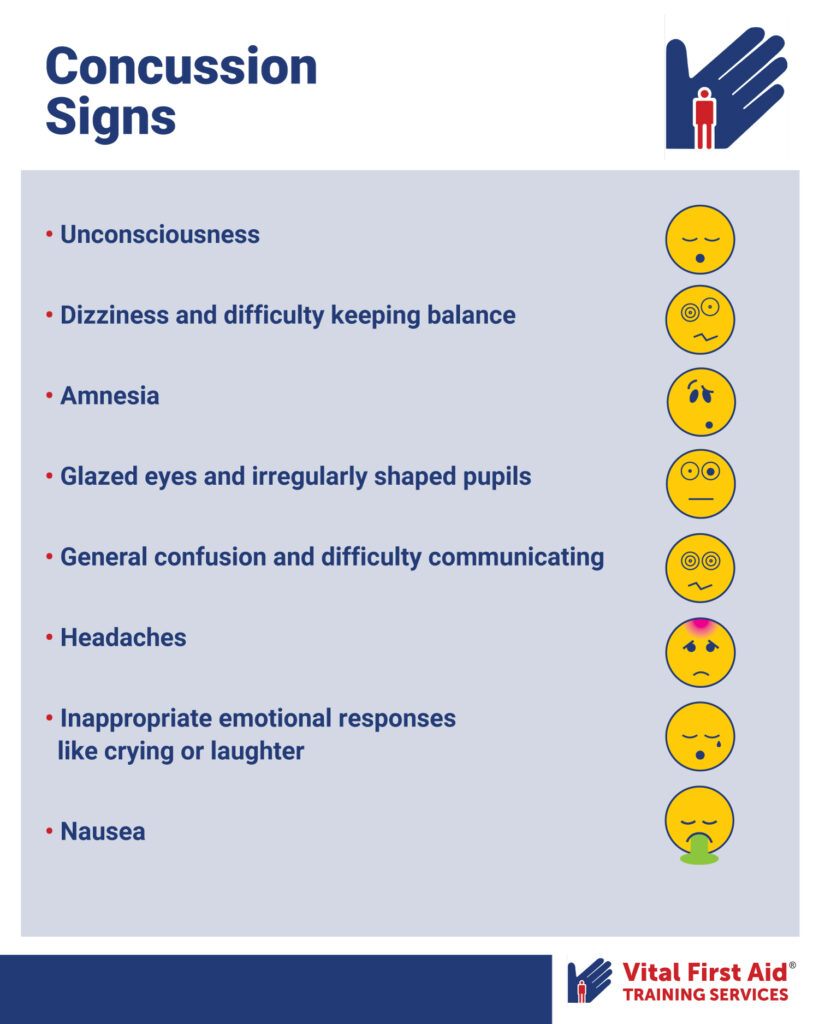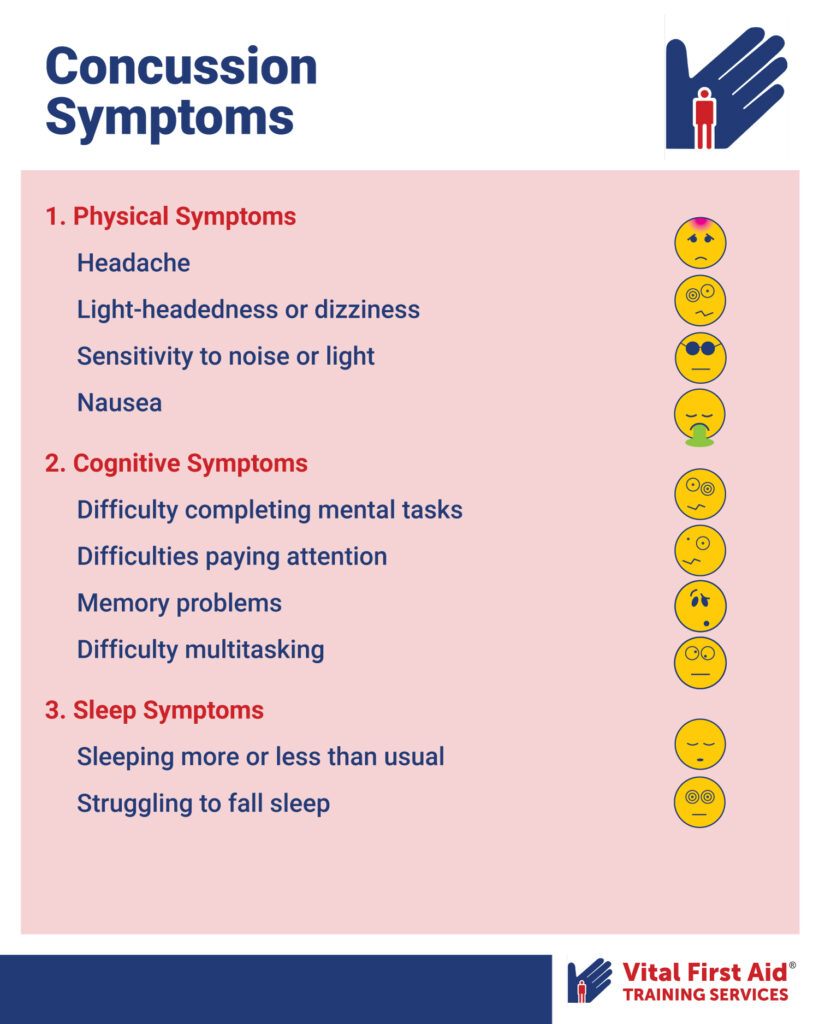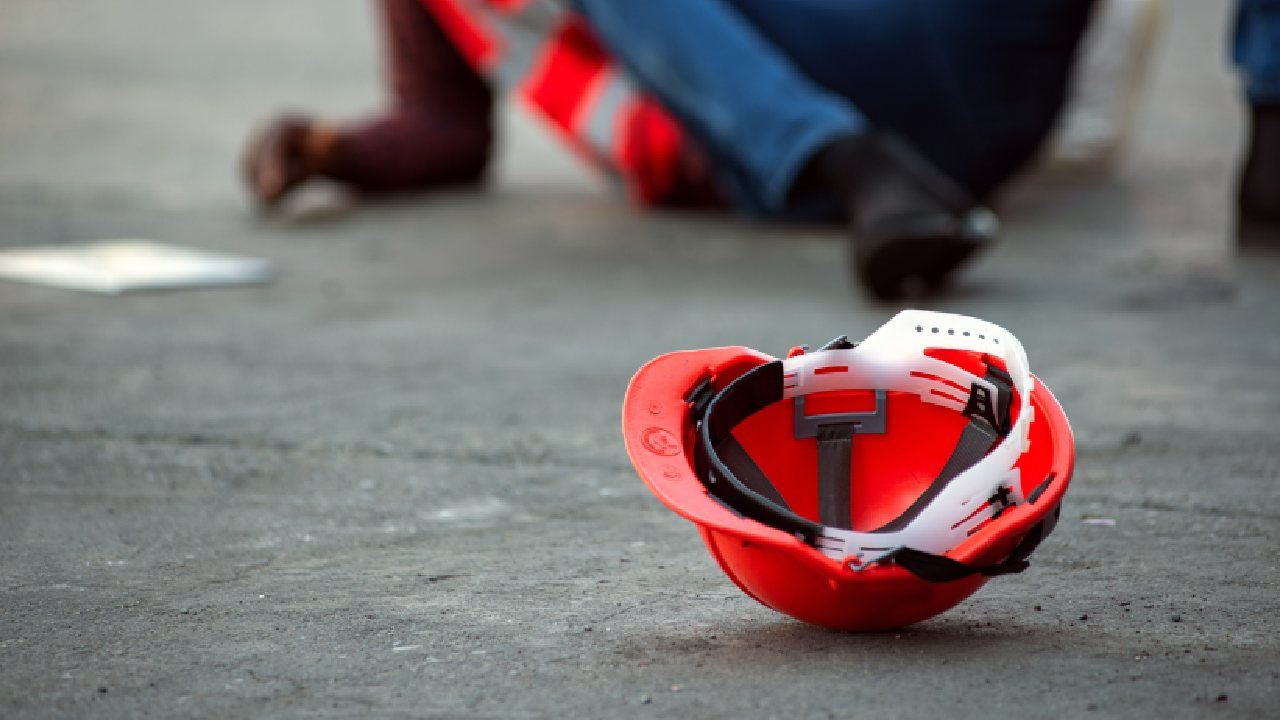The Vital Facts
- The most common type of head injury is concussion.
- Someone in Australia is hospitalised for a head injury every 4 minutes.
- Falls and transport are the most common cause of hospitalisation or death from a head injury.
Explore this article:
All head injuries should be taken seriously. Your head houses your brain – the most important organ in your body and the thing that makes you…you.
Injuries that affect the brain can take time to show symptoms, so it is important to know what to look out for if you suspect something is wrong.
Learn how to apply first aid for head injuries, including concussions, cuts and contusions.
First Aid for Concussions
Concussions are one of the more common head injuries that can be difficult to recognise. A concussion occurs when something causes a person’s head to move so quickly that their brain hits their skull or changes shape. When that happens, brain cells can be damaged and struggle to communicate with each other.
Since different parts of the brain can be damaged in different ways, it can be difficult to know how severe a concussion is, or whether it is masking more severe injuries. Because of that, it is essential that all head injuries are taken seriously, and that medical attention is sought out if any concussion symptoms develop.
Concussion Signs
Concussion symptoms often present over time, and someone who initially seems fine may actually be concussed. Concussion signs can even appear days after the injury. If you suspect concussion, look for the following signs:
- Unconsciousness
- Dizziness and difficulty keeping balance
- Amnesia
- Glazed eyes and irregularly shaped pupils
- General confusion and difficulty communicating
- Headaches
- Inappropriate emotional responses like crying or laughter
- Nausea

Concussion Symptoms
If any signs are present, ask the injured person if they are feeling any of the following:
1. Physical Symptoms
- Headache
- Light-headedness or dizziness
- Sensitivity to noise or light
- Nausea
2. Cognitive Symptoms
- Difficulty completing mental tasks
- Difficulties paying attention
- Memory problems
- Difficulty multitasking
3. Sleep Symptoms
- Sleeping more or less than usual
- Struggling to fall sleep

Concussion Treatment
Medical professionals will rule out any complications or associated injuries, and will likely discharge you within 24hrs. Unfortunately, there is no easy fix for a concussion. The brain needs time to repair itself, and symptoms will persist for as long as that process takes.
To prevent worsening your symptoms, you should avoid alcohol and try to keep your food and drink intake light for the first 24hrs. Most importantly, you must not reinjure your head in any way. Your brain is vulnerable during a concussion and reinjury can be catastrophic.
You can assist the healing process by limiting your physical and mental energy exertion over the next few days. Try to ease back into regular activities in the coming weeks.
First Aid for Head Cuts
First of all, if the patient is displaying any signs of concussion, or the injury has affected their eye, they require medical attention. This is irregardless of the severity of the cut.
The first thing you will notice about a head cut is that it will bleed more severely than a similar sized wound elsewhere on the body. Head cuts bleed more because the brain requires an enormous amount of oxygen for all of its celular activity. This means your head is full of blood vessels, all of which will bleed if cut.
Head Cut Treatment
To treat a head cut:
- Keep the person still and ensure that their head is elevated above their heart to slow the blood flow to the cut
- Clean the wound with an antiseptic or saline solution (this is important as infections close the eyes and brain can have severe consequences)
- If the wound is small, cover it with a clean band aid or dressing
- If the wound is severe, hold a sterile cloth or gauze against the cut to stop the bleeding. If the wound is this serious and will require stitches, seek medical attention.
- Keep the wound clean and administer light painkillers like paracetamol
For minor head cuts, treatment really doesn’t differ from how you would treat a cut anywhere else on the body. However, for severe cuts there are some differences.
First, if you suspect the person has a skull fracture or brain swelling, do not apply pressure to stem the bleeding. This could damage the brain. Call for immediate medical assistance and attempt to cover the wound without pressure until help arrives.
Second, if the head injury is serious enough to have caused the patient to stop breathing, providing CPR must take priority over preventing blood loss.
First Aid for Head Contusions
Like cuts, contusions can happen anywhere on the body, and are more commonly referred to as bruises. They are usually minor, uncomfortable injuries that heal on their own.
However, there are two broad types of contusion that can occur from a head injury, and one is extremely serious.
Bruising to the Head or Skin
An extracranial contusion is essentially a regular bruise, but it occurs on a person’s head. At the point of impact where the injury occured, blood vessels can burst within the soft tissue causing discolouration, tenderness, and potential swelling. To treat an extracranial contusion:
- Limit your head movement and try to rest
- Apply an ice pack to ease pain and swelling
- Keep your head elevated above your heart to reduce the blood flow to the area
- Take mild painkillers such as paracetamol
The contusion should heal on its own over the next few days or weeks, depending on its severity.
Bruising in or Around the Brain
Intracranial contusions are bruises that affect the brain itself. These can lead to brain swelling. Unfortunately, just like a concussion, intracranial contusions may not present symptoms immediately. Symptoms may take days to appear, and can consist of:
- A persistent or worsening headache
- Nausea
- Dizziness
- Confusion
- Drowsiness or lethargy
- Slurring or unusual speech
- Slow movement speed
If any of these symptoms appear, or if you suspect an intracranial contusion, you must seek medical help immediately. If the person experiences loss of consciousness or seizures, call an ambulance.
Vital First Aid
As you can see, head injuries range from minor to severe and it can be difficult to tell the difference. Unfortunately, head injuries are very common, especially in sports.
See our free resources designed to assist sporting clubs recognise and manage concussion.
If you play a sport, or have children who do, you need to know how to act decisively.
Vital First Aid offer a range of courses that will help you recognise and respond to a range of injuries.
Have the confidence to provide life-saving care by signing up for a course today.



